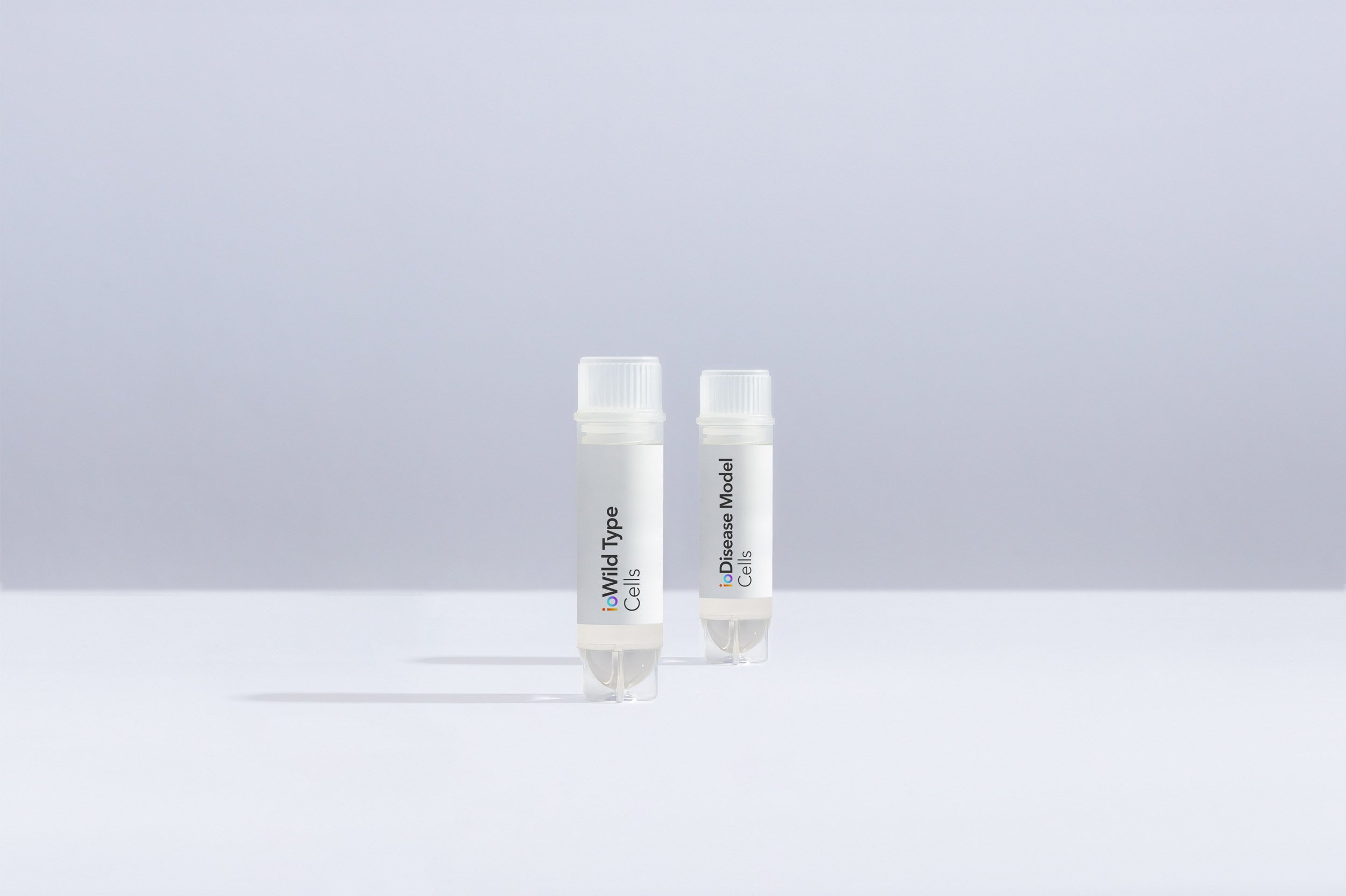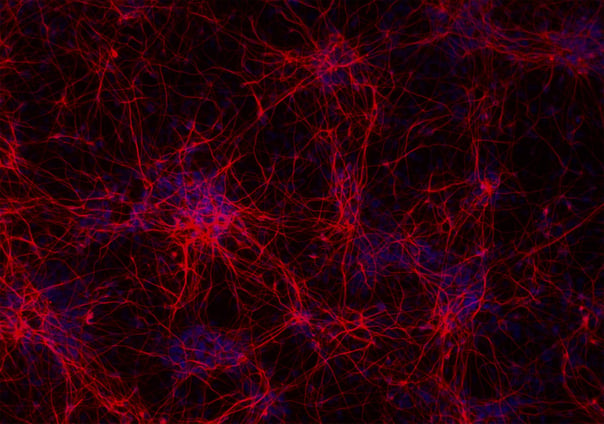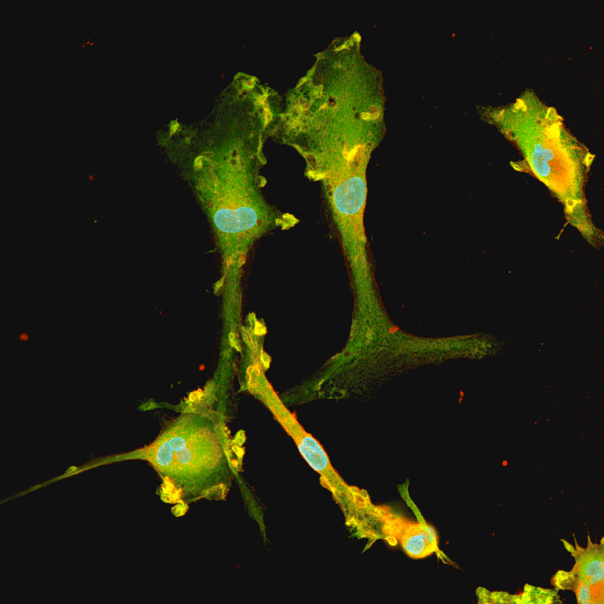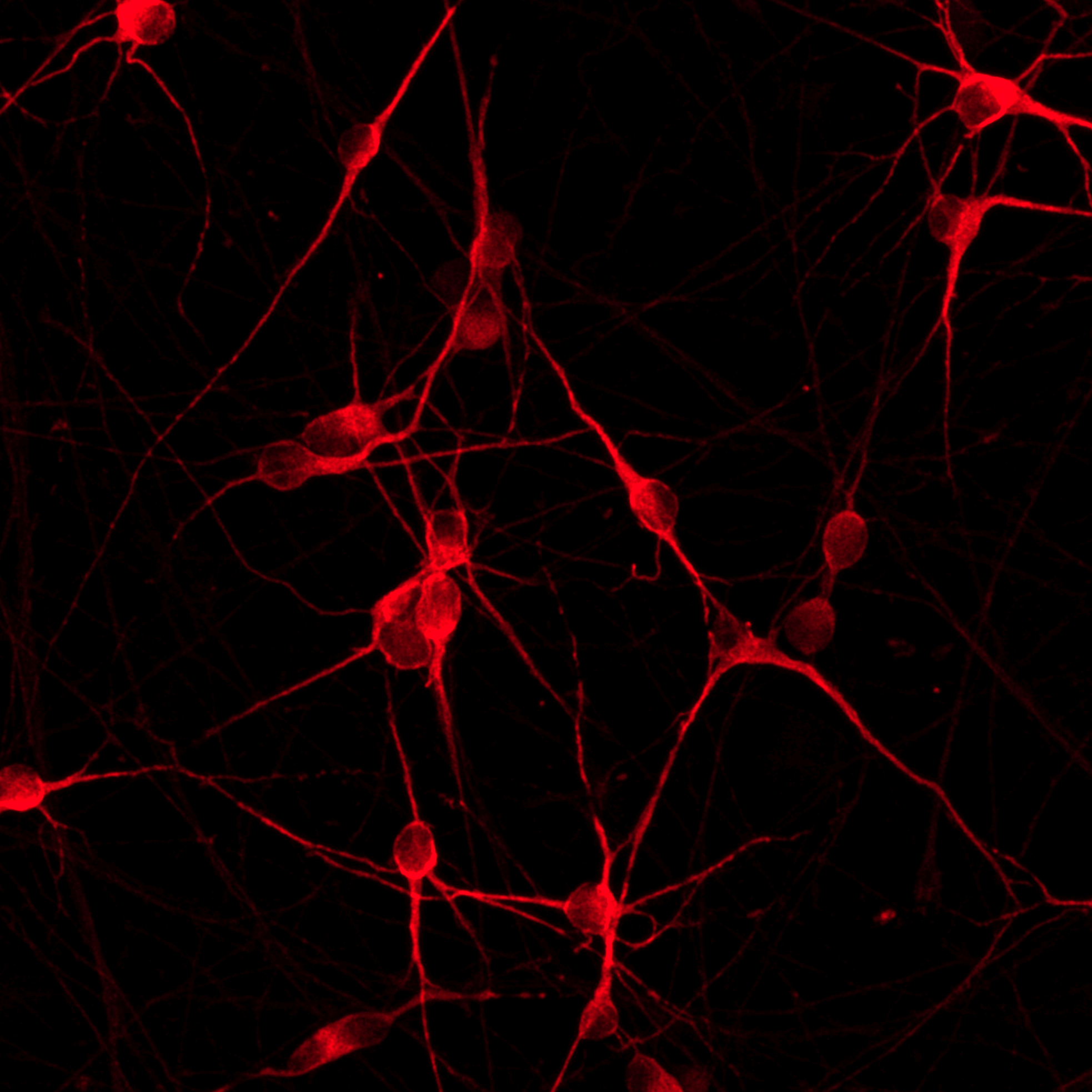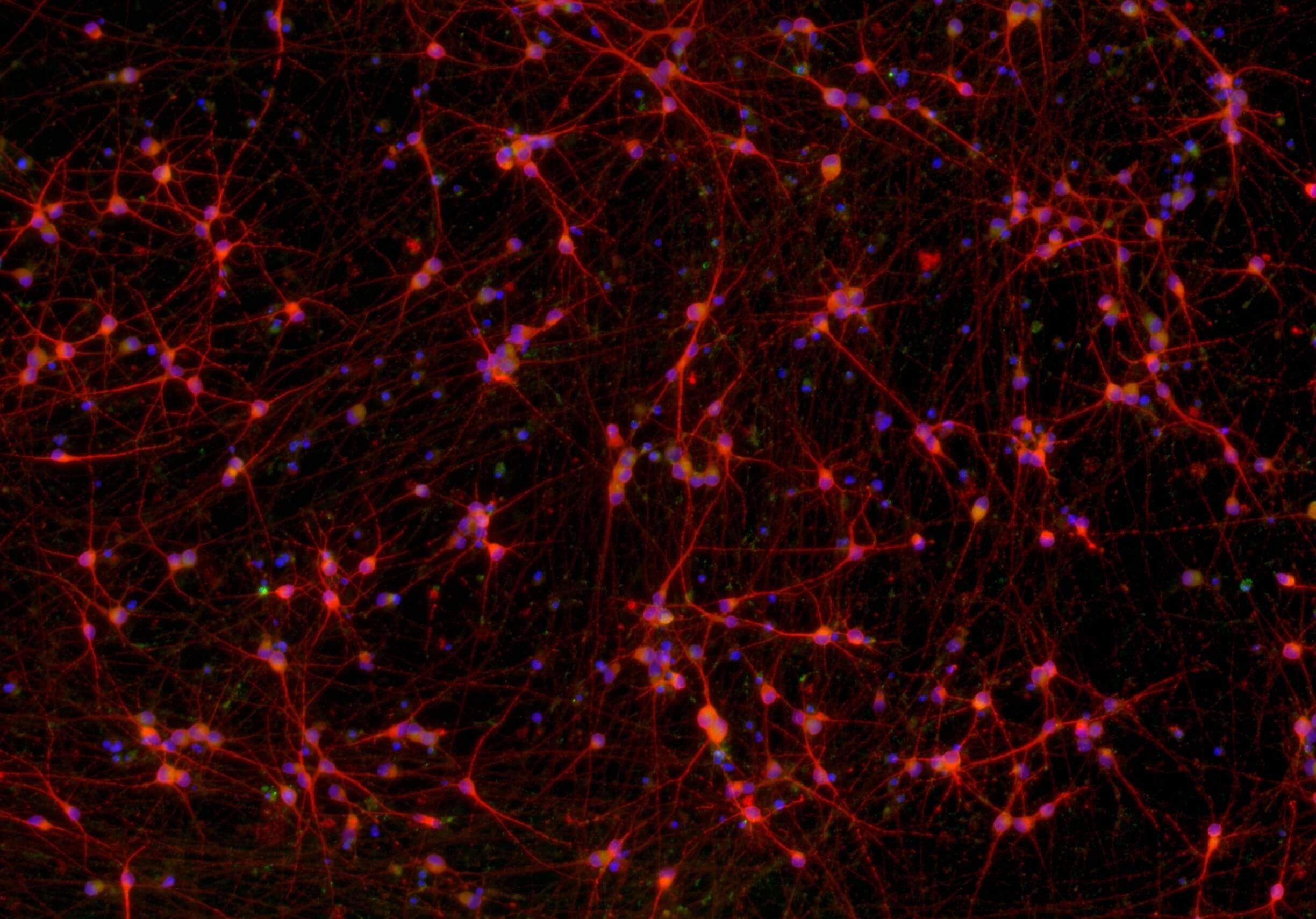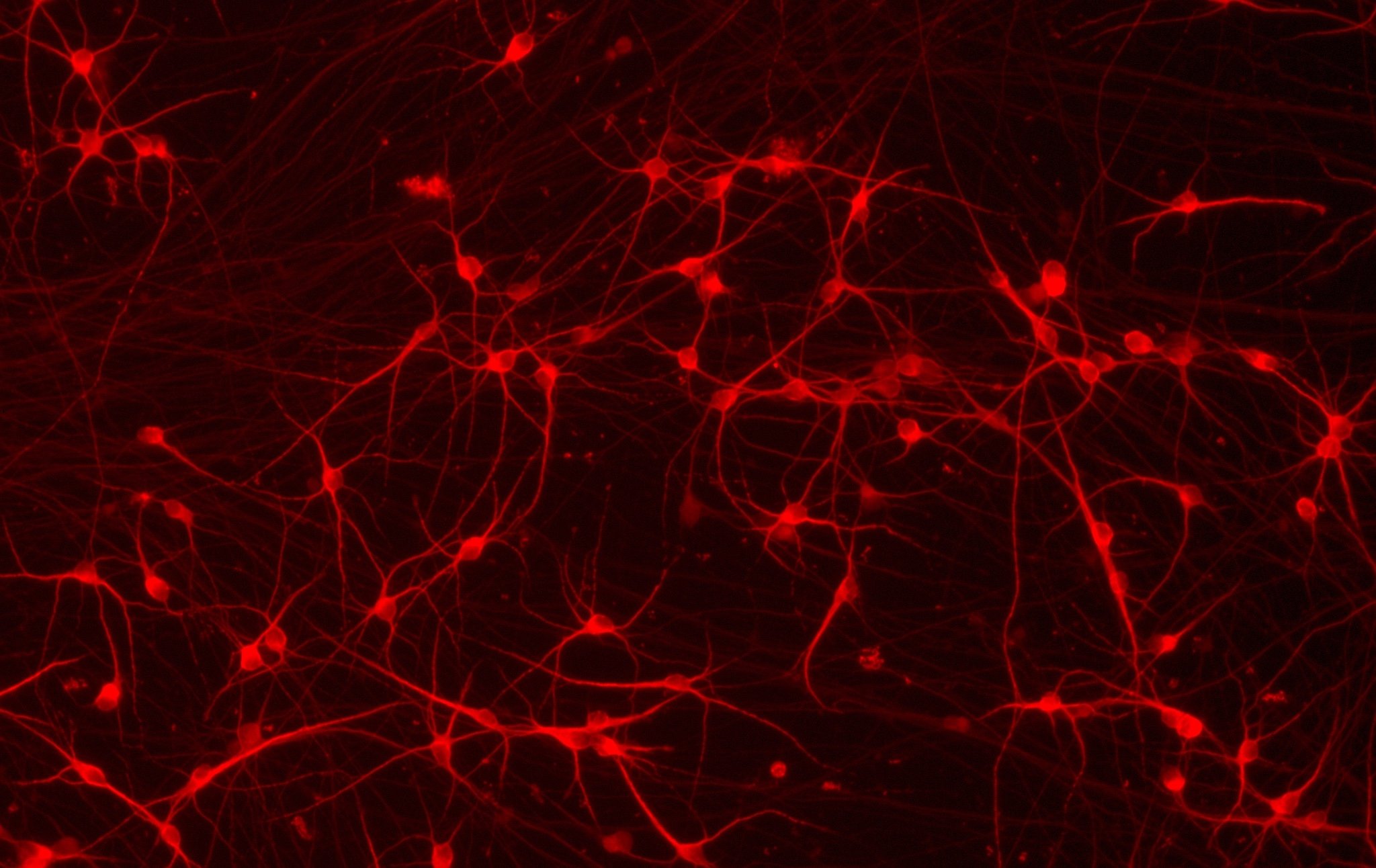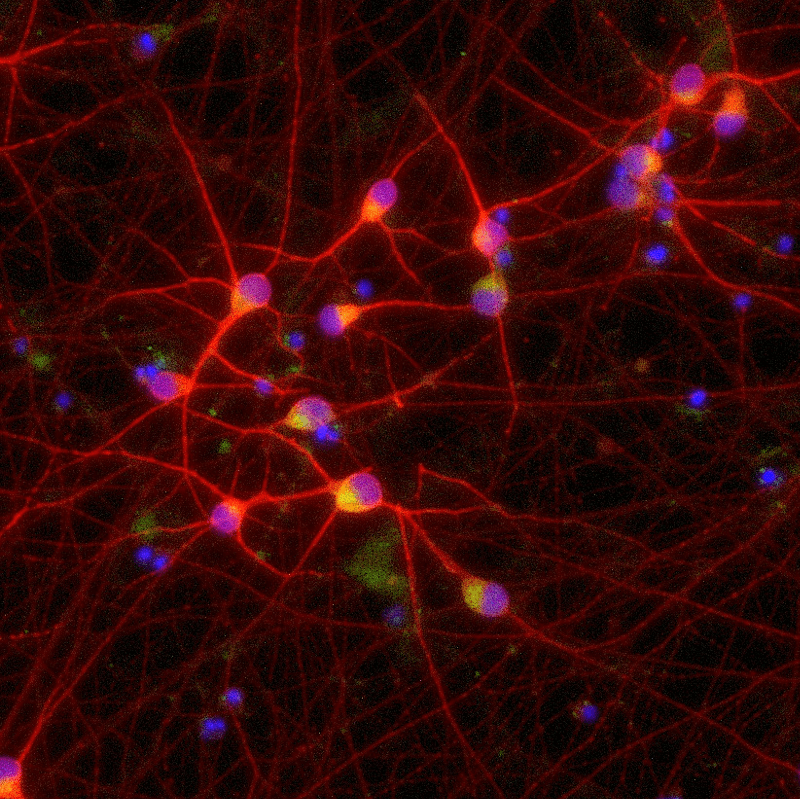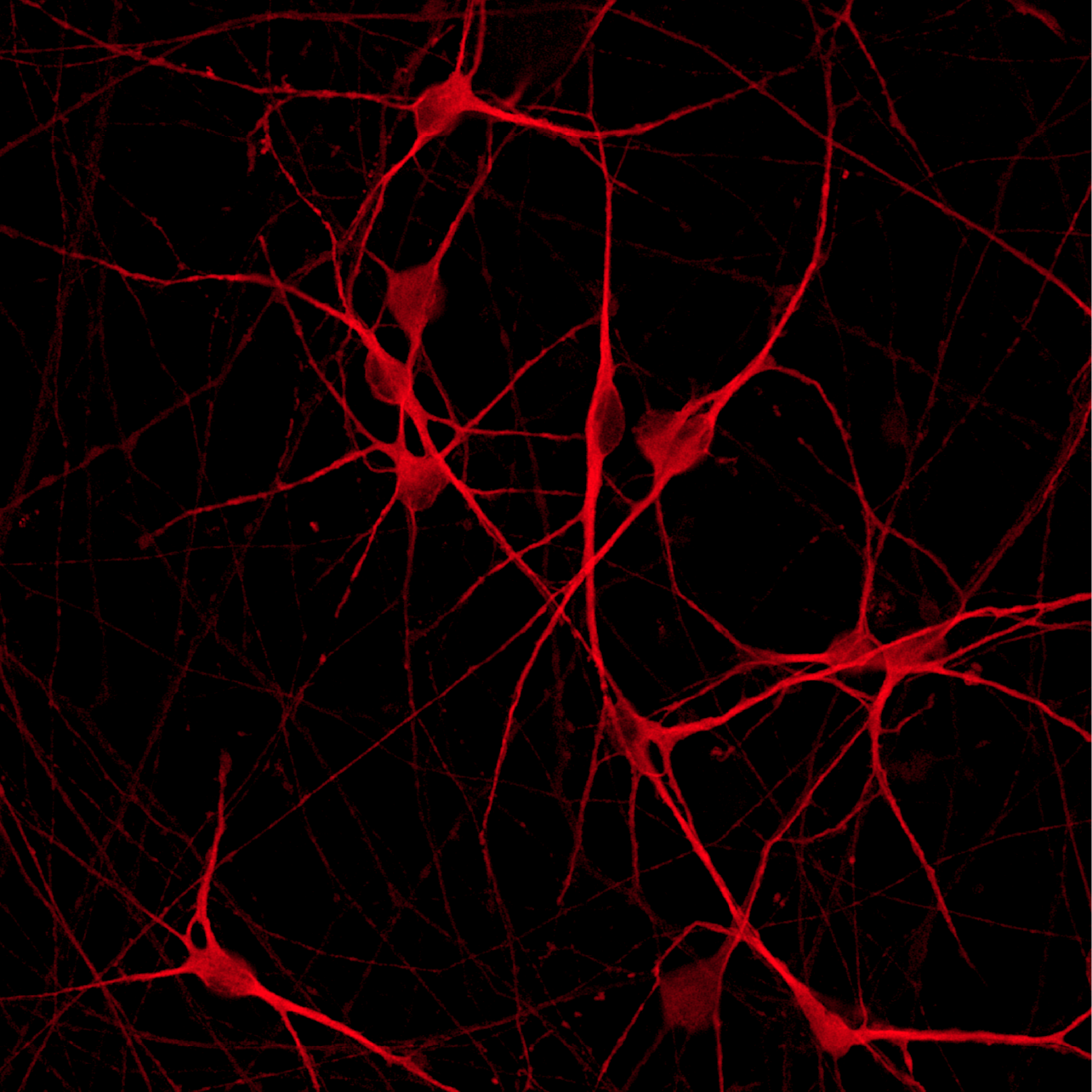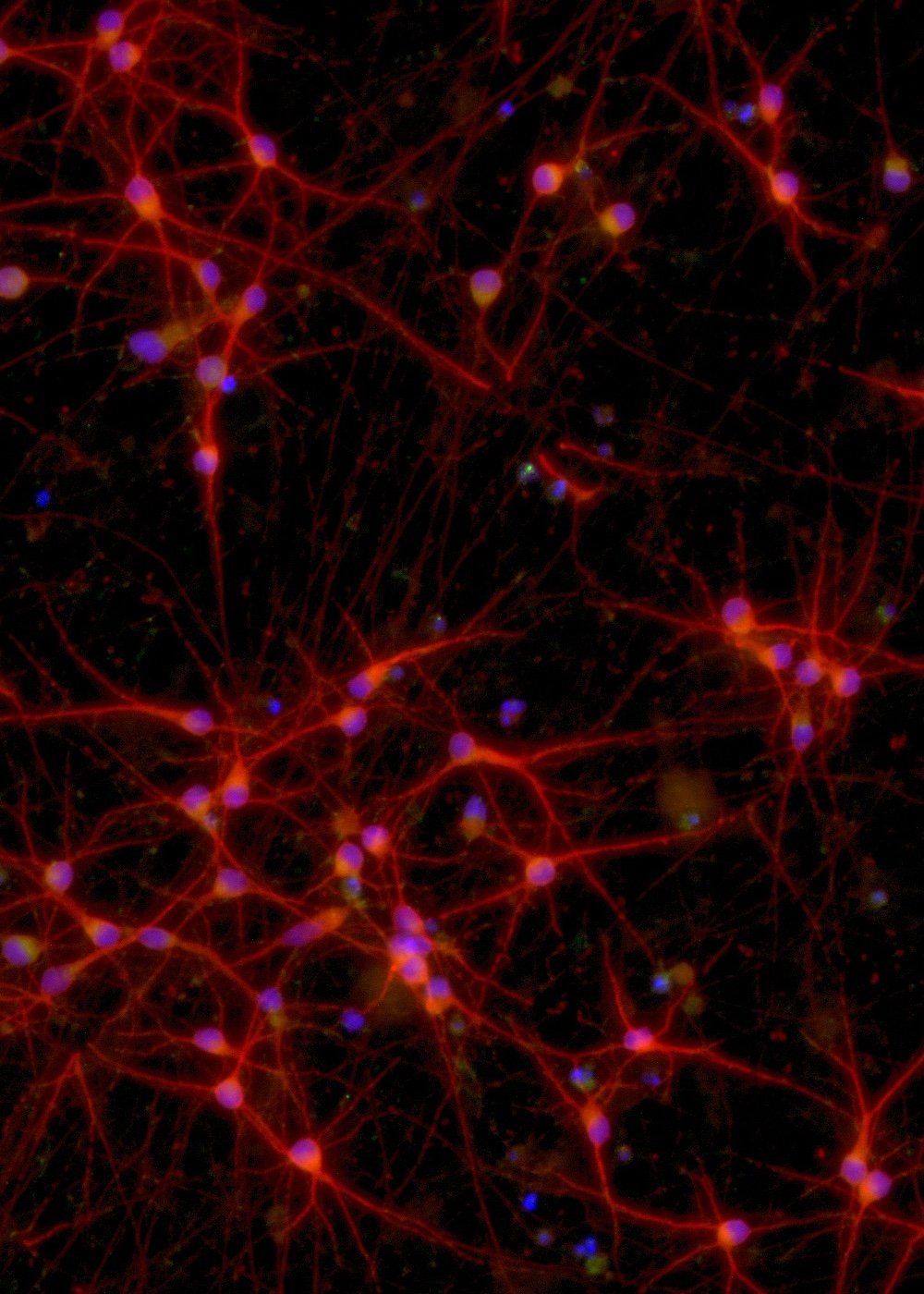
cat no | io1008
ioGlutamatergic Neurons
MAPT P301S/P301S
Human iPSC-derived FTD disease model
A rapidly maturing, consistent and scalable isogenic system to study frontotemporal dementia (FTD).
ioGlutamatergic Neurons MAPT P301S/P301S are opti-ox precision reprogrammed glutamatergic neurons containing a genetically engineered homozygous P301S mutation in the MAPT gene encoding the tau protein.
The disease model cells show a FTD disease-related phenotype, indicated by hyperphosphorylation of tau compared to the isogenic control.
These cells are part of a range that includes a heterozygous MAPT P301S mutation, a heterozygous MAPT N279K mutation and a homozygous MAPT N279K mutation. When paired with the genetically matched (isogenic) control, wild type ioGlutamatergic Neurons, these disease model cells offer a physiologically relevant model to investigate the impact of mutant tau protein on disease progression.
Place your order
Confidently investigate your phenotype of interest across multiple clones with our disease model clone panel. Detailed characterisation data (below) and bulk RNA sequencing data (upon request) help you select specific clones if required.
per vial
A maximum number of 20 vials applies. If you would like to order more than 20 vials, please contact us at orders@bit.bio.
Benchtop benefits
Disease-related phenotype
High content ICC image analysis shows hyperphosphorylation of tau compared to the wild-type control.
Make True Comparisons
Pair the ioDisease Model Cells with the genetically matched wild-type ioGlutamatergic Neurons to directly investigate the impact of mutant tau protein on disease.
Quick
The disease model cells and isogenic control are experiment ready as early as 2 days post revival, and form structural neuronal networks at 11 days.
Disease-related phenotype
Hyperphosphorylation of tau observed in the disease model cells compared to the isogenic control
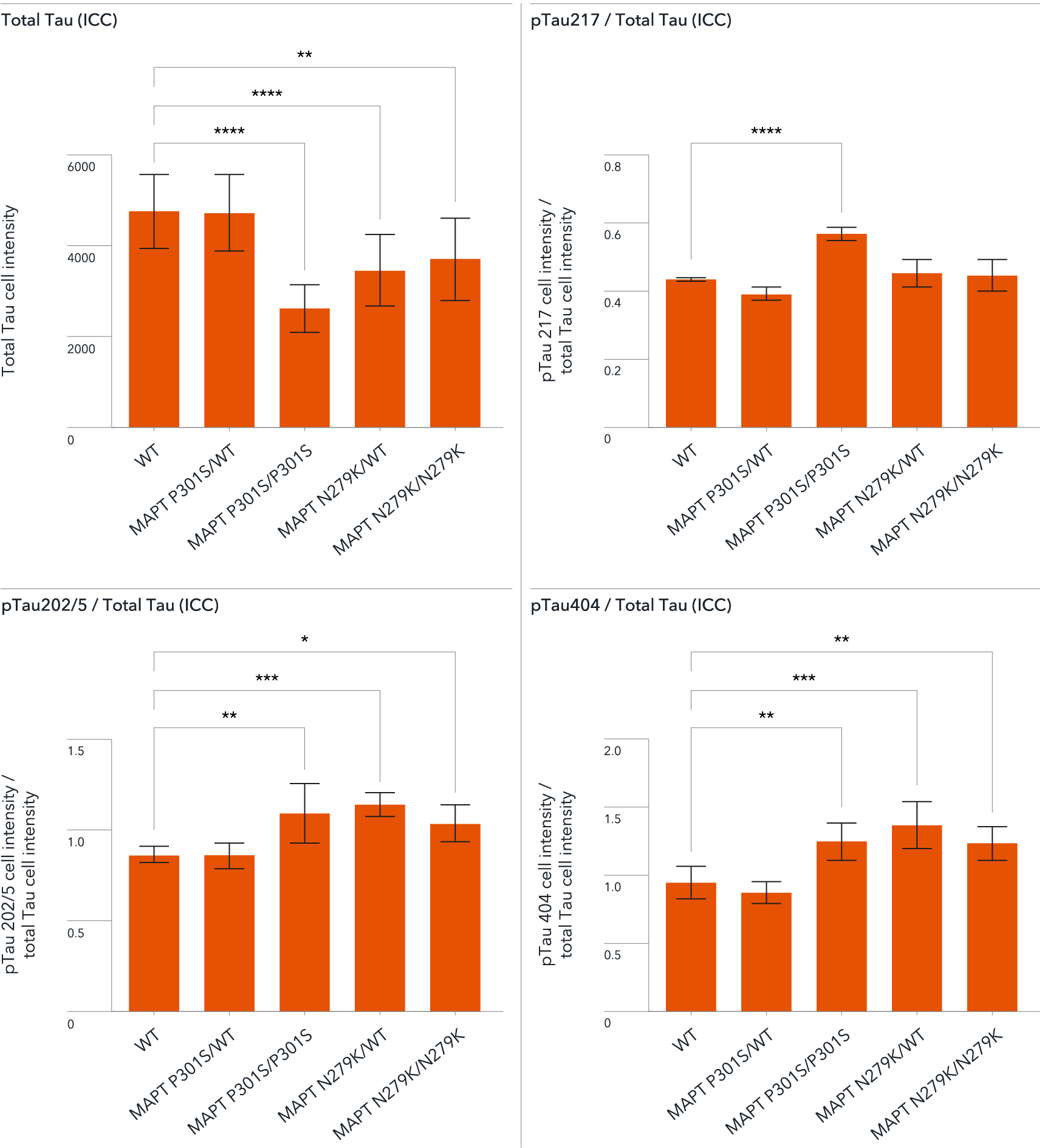
ioGlutamatergic Neurons disease model cells carrying MAPT P301S/P301S, MAPT N279K/WT and MAPT N279K/N279K mutations show hyperphosphorylation when compared to the isogenic control ioGlutamatergic Neurons (WT) at day 21. The bar graphs show total Tau, pTau217/total Tau, pTau202/5/total Tau or pTau404/total Tau in cell bodies, analysed by immunocytochemistry. Statistical analyses performed on 5 cellular replicates in the same plate. Bars showing mean, error bars showing standard deviation. Statistics calculated by one way ANOVA and Tukey posthoc analysis. Data courtesy of Charles River Laboratories.
Highly characterised and defined
ioGlutamatergic Neurons MAPT P301S/P301S express neuron-specific markers comparably to the isogenic control
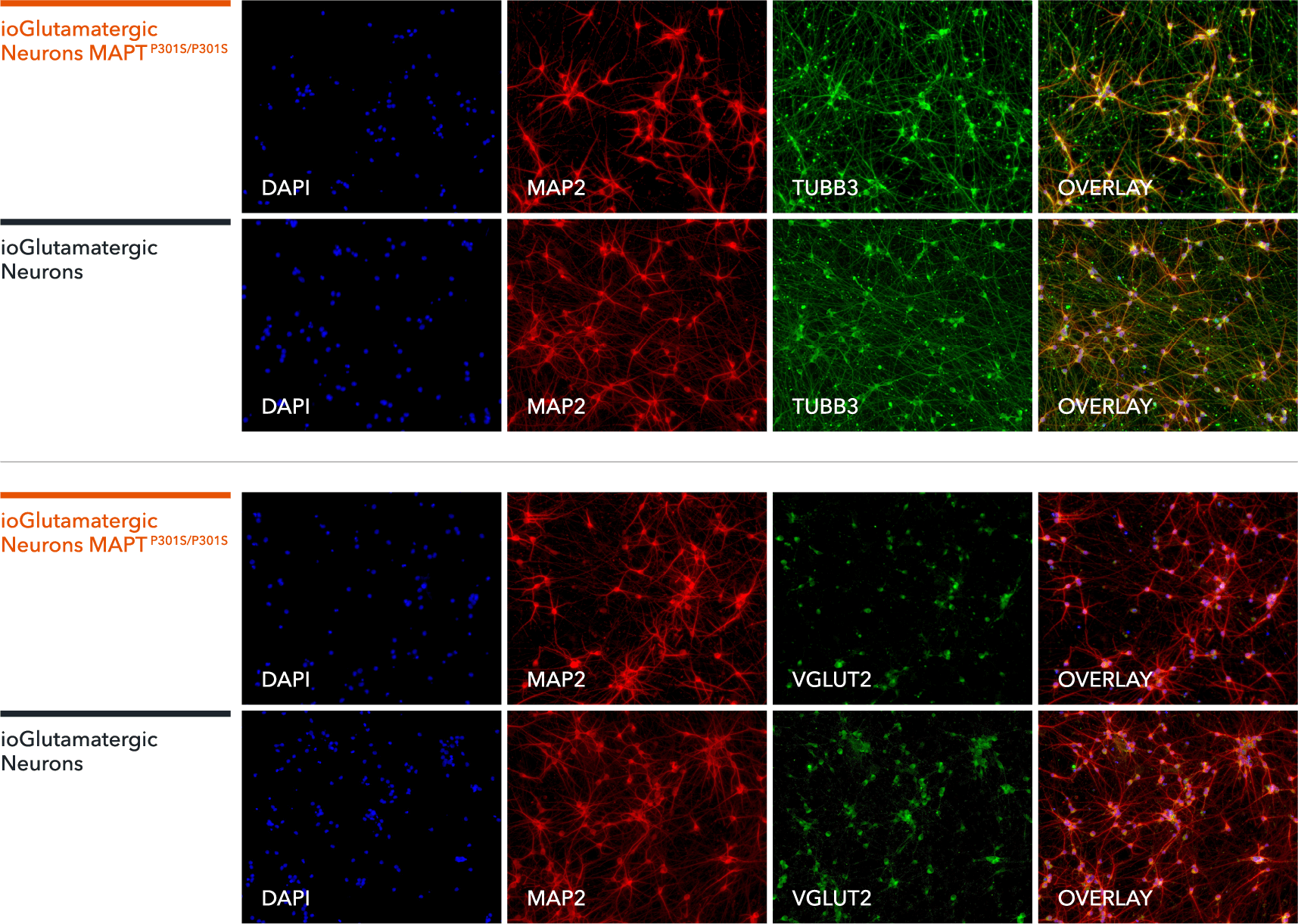
Immunofluorescent staining on post-revival day 11 demonstrates similar homogenous expression of pan-neuronal proteins MAP2 and TUBB3 (upper panel) and glutamatergic neuron-specific transporter VGLUT2 (lower panel) in ioGlutamatergic Neurons MAPT P301S/P301S compared to the isogenic control. 100X magnification.
ioGlutamatergic Neurons MAPT P301S/P301S form structural neuronal networks by day 11
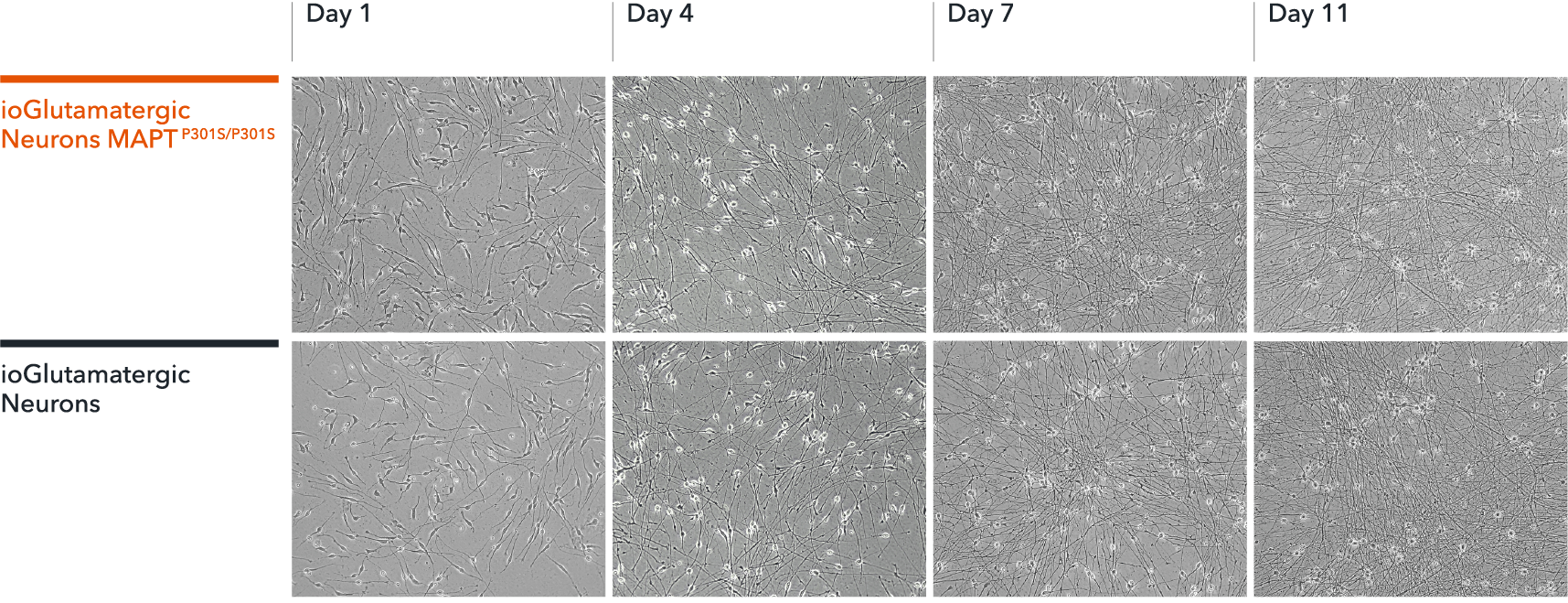
ioGlutamatergic Neurons MAPT P301S/P301S mature rapidly and form structural neuronal networks over 11 days, when compared to the isogenic control. Day 1 to 11 post thaw; 100X magnification.
ioGlutamatergic Neurons MAPT P301S/P301S demonstrate gene expression of neuronal-specific and glutamatergic-specific markers following deterministic programming
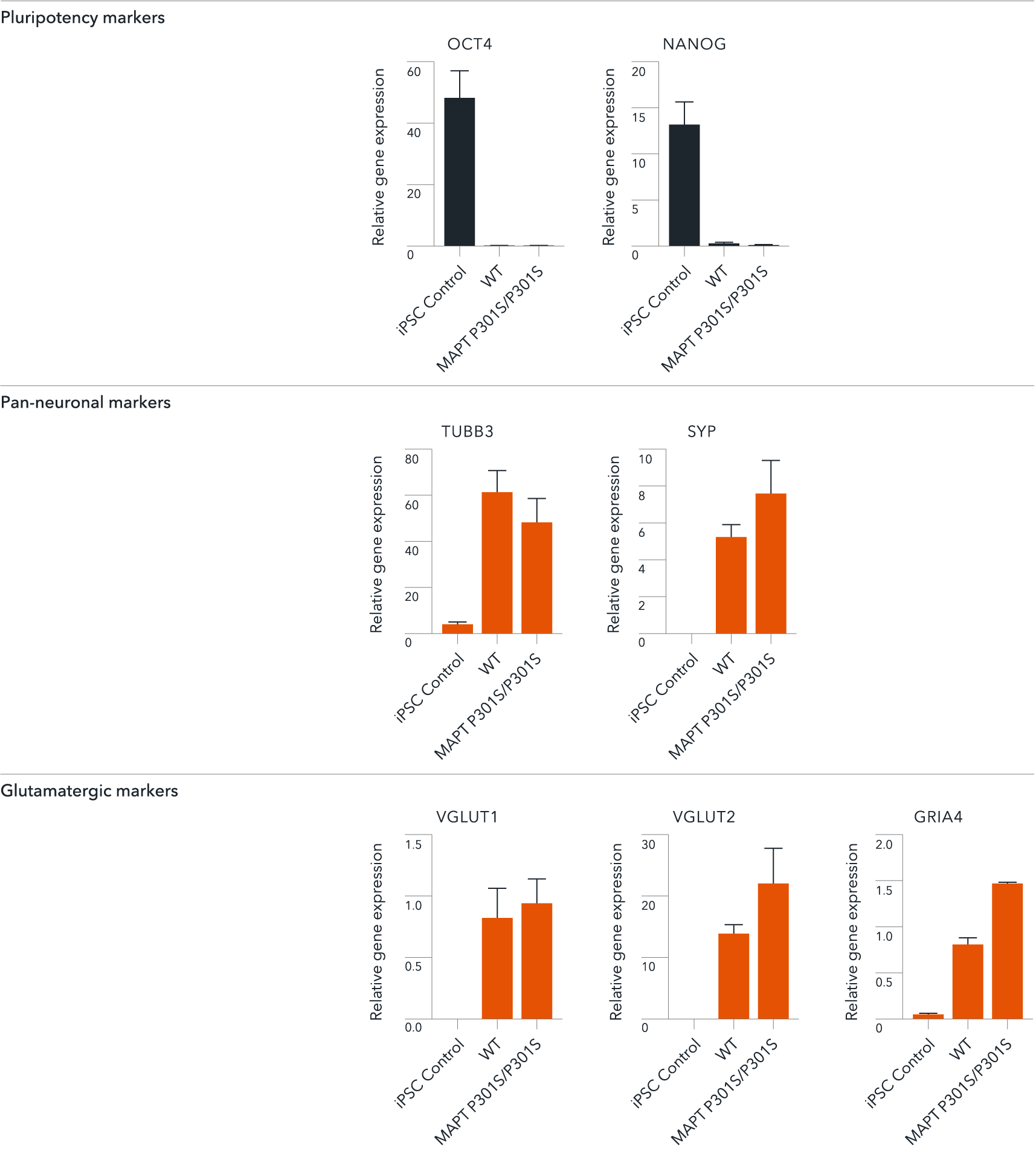
Gene expression analysis demonstrates that at day 11, ioGlutamatergic Neurons MAPT P301S/P301S (MAPT P301S/P301S) and the wild type isogenic control (WT) lack the expression of pluripotency makers (NANOG and OCT4) whilst robustly expressing pan-neuronal (TUBB3 and SYP) and glutamatergic specific (VGLUT1 and VGLUT2) markers, as well as the glutamate receptor GRIA4. Gene expression levels were assessed by RT-qPCR. Data is shown relative to the parental hiPSC control (iPSC Control), normalised to HMBS. Data represents day 11 post-revival samples; n=2 biological replicates.
Disease-related MAPT is expressed in ioGlutamatergic Neurons MAPT P301S/P301S following deterministic programming
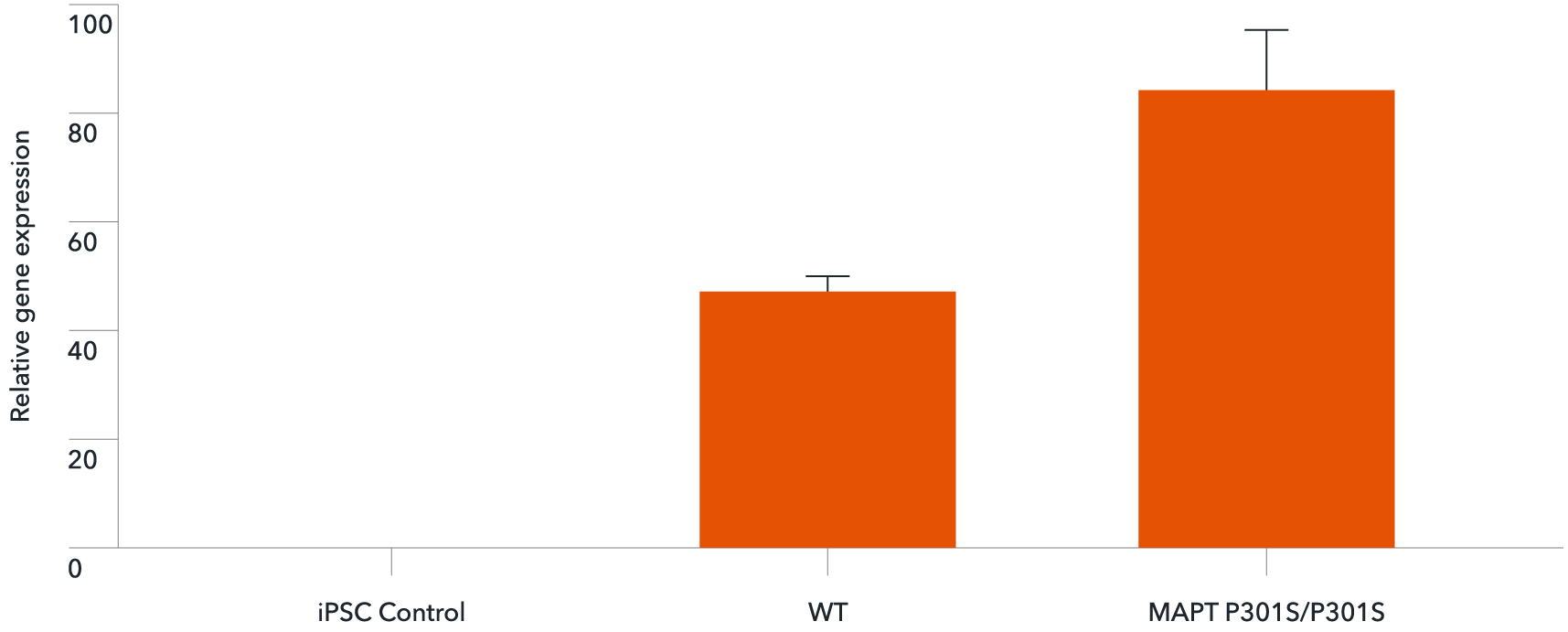
RT-qPCR analysis demonstrates similar expression level of the MAPT gene in both wild type ioGlutamatergic Neurons (WT) and ioGlutamatergic Neurons MAPT P301S/P301S (MAPT P301S/P301S) at day 11 post-revival (n=2 replicates). cDNA samples of the parental iPSC line (iPSC Control) were included as a reference.
Cells arrive ready to plate
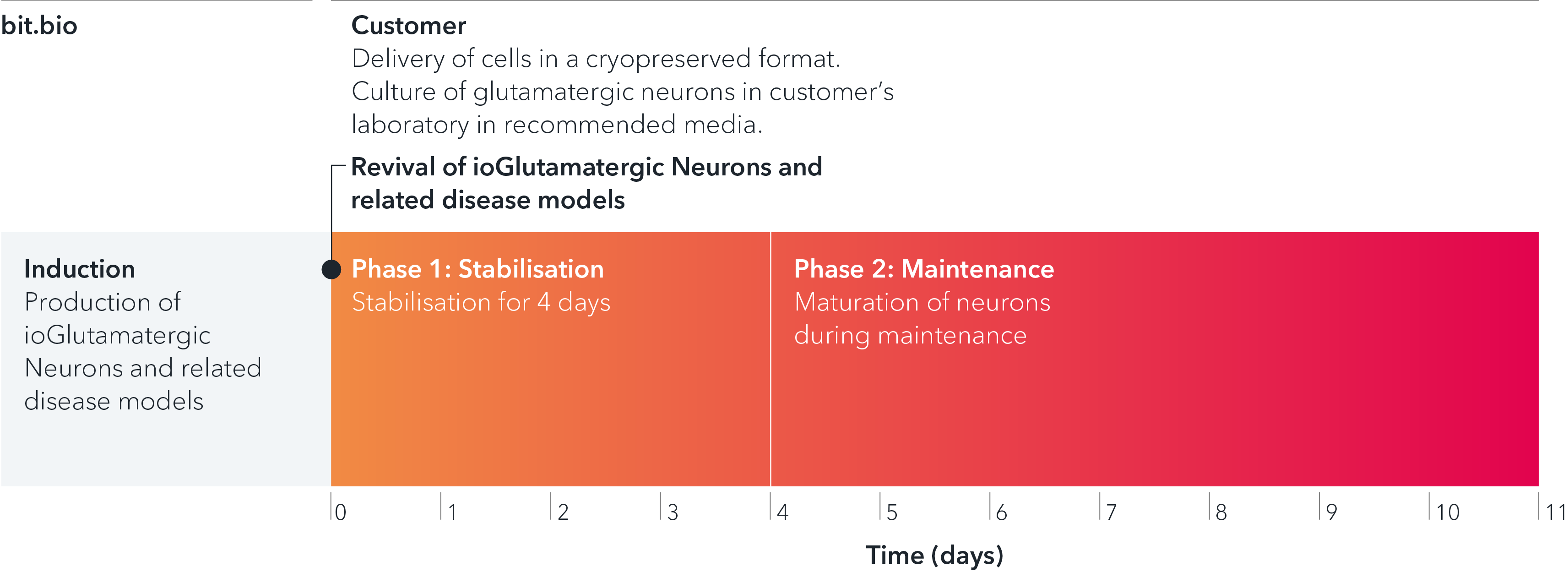
ioGlutamatergic Neurons MAPT P301S/P301S are delivered in a cryopreserved format and are programmed to mature rapidly upon revival in the recommended media. The protocol for the generation of these cells is a two-phase process: Phase 1, Stabilisation for 4 days; Phase 2, Maintenance, during which the neurons mature. Phases 1 and 2 after revival of cells are carried out by the customer.
Industry leading seeding density
Do more with every vial
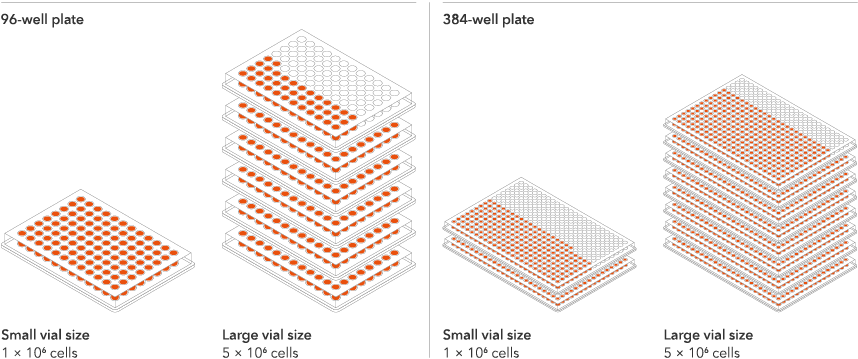
The recommended minimum seeding density is 30,000 cells/cm2, compared to up to 250,000 cells/cm2 for other similar products on the market. One small vial can plate a minimum of 0.7 x 24-well plate, 1 x 96-well plate, or 1.5 x 384-well plates. One large vial can plate a minimum of 3.6 x 24-well plates, 5.4 x 96-well plates, or 7.75 x 384-well plates. This means every vial goes further, enabling more experimental conditions and more repeats, resulting in more confidence in the data.
Starting material
Human iPSC line
Karyotype
Normal (46, XY)
Seeding compatibility
6, 12, 24, 48, 96 & 384 well plates
Shipping info
Dry ice
Donor
Caucasian adult male (skin fibroblast)
Vial size
Small: >1 x 10⁶ viable cells
Large: >5 x 10⁶ viable cells
Quality control
Sterility, protein expression (ICC), gene expression (RT-qPCR) and genotype validation (Sanger sequencing)
Differentiation method
opti-ox deterministic cell programming
Recommended seeding density
30,000 cells/cm2
User storage
LN2 or -150°C
Format
Cryopreserved cells
Genetic modification
Homozygous P301S missense mutation in the MAPT gene
Applications
FTD research
Drug discovery and development
Disease modelling
High content imaging
Western blotting
Electrophysiological assays (MEA)
Co-culture studies
Product use
ioCells are for research use only
Supporting documentation
Product resources
2025
bit.bio
2025
bit.bio
Inês Ferreira | Senior Product Manager | bit.bio
bit.bio
V11
bit.bio
2024
bit.bio
2024
Professor Deepak Srivastava
Professor of Molecular Neuroscience and Group Leader, MRC Centre for Developmental Disorders
King’s College London
Cell culture hacks | human iPSC-derived glutamatergic neurons
Read this blog on glutamatergic neuron cell culture for our top tips on careful handling, cell plating and media changes to achieve success from the outset.
.png?width=1860&height=1260&name=bit.bio_3x2_ioGlutamatergic%20Neurons_MAP2_Hoescht_x20_hi.res%20(1).png)
Wild Type and Isogenic Disease Model cells: A true comparison.
Further your disease research by pairing our wild type cells with isogenic disease models.
